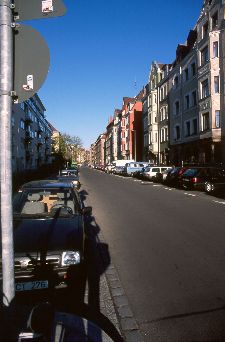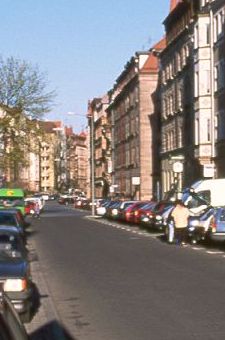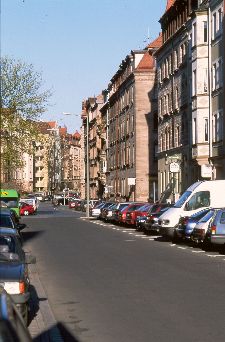Common photography myths (9)
Myth #8: Different focal lengths create different perspectives
September 5th, 2009 - 08:41:36 PM:
People can be very sloppy with terminology. I've noticed that when people say “perspective” they very often mean something else, eg. “field of view”, and that many are unaware of what “perspective” actually is. This happens even to people who should know better: Taken literally from a lens catalog of a camera maker:
[…] Wideangle lenses offer an increased depth-of-field perspective not possible with the human eye. […]What the hell is a “depth-of-field perspective”!? They probably meant “field of view”.
Perspective has nothing to do with focal length. Perspective describes how a 3D scene is projected onto a 2D canvas, eg. film, digital sensor or even your retina. Perspective describes how the objects in the 3D scene appear in the 2D image, which objects are visible and which are obscured by other objects, how big they appear in relation to each other. Focal length only influences the field of view, ie. how much of the entire scene appears in the image. Focal length does not change the relative sizes of objects in the image. Perspective is only influenced by the relative position of the objects in the scene and by the position of the canvas (viewer, camera). If you want one object in the foreground appear much bigger than another object farther away, it doesn't help to change focal length. The only way to accomplish that is to get closer to the object in the foreground. If you want both to appear as being about the same size, the only way to accomplish that is to get farther away from both objects.
Perspective is only influenced by your position, and field of view is only influenced by focal length.
You often hear things like “wide-angle perspective”. There is no such thing. People mean either “wide-angle field of view” or “close-up perspective” here. You also often hear “zooming with your feet”. This doesn't make any sense at all. Zooming changes focal length only (and therefore field of view), and walking changes perspective only. You can't replace one with the other.
So why is it still that with wide-angle photos the objects in the foreground look quite large, and with tele-photo shots the scene looks “compressed”? Doesn't this contradict what I just said? No, it's just a coincidence. With wide-angle lenses you can focus quite closely, and if you do get close to foreground objects, they will appear large. The wide-angle lens just allows you to also capture some of the background of the scene. With tele-photo lenses, you often shoot objects that are far away. It's that “being far away” that makes the scene look compressed, not the tele-photo lens. The lens only lets you capture the “right” crop of the entire scene, blocking out the foreground and concentrating on the faraway objects.
In many lens catalogs and books and on many web sites you can see a series of photos of the same scene taken with different lenses. With some of these the perspective is indeed different in different shots. Again, that's just a coincidence. What they don't tell you is that the photographer walked back to capture a foreground object at constant size while using ever longer lenses. But it's this “walking back” that caused the change in perspective, not the longer lenses.
Still not convinced? Here are a few examples:
 |  |  |
| Image 1: Shot taken with 20 mm focal length | Image 2: Crop from image 1 | Image 3: Shot taken with 100 mm focal length |
If focal length had any influence on perspective, shouldn't image 3 look radically different than image 2? But except for sharpness, they're identical. So why do they look the same? It's because they were taken from the same position.
Another example:
 |  |
| Image 4: Shot taken with 20 mm focal length | Image 5: Shot taken with 20 mm focal length |
The background is almost identical in both shots, but in image 5 the foreground
is much more pronounced. Both were taken with the same wide-angle lens. Why is that?
It's because image 5 was taken closer to the stump in the foreground and
from a lower angle. It's not the wide-angle lens that pronounces the foreground,
it's the shooting position.
Categories: Articles • Archive of all entries
